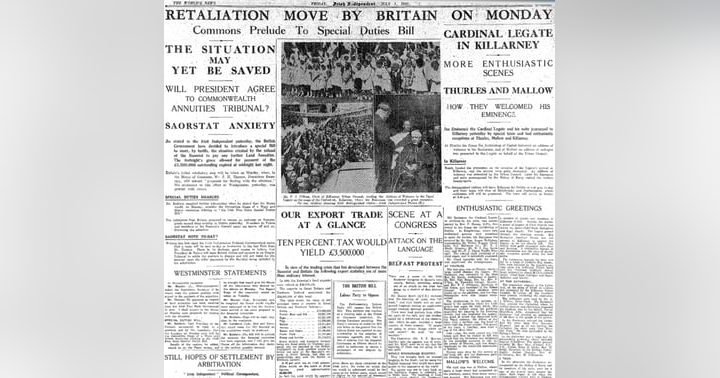Hugh Carey - Governor of New York (1919 - 2011)

Hugh Carey, the 51st Governor of New York, 7-term member of the US House of Representatives and grandson of Irish immigrants, was born in Brooklyn on Apr 11th, 1919.
Have you listened to our podcast? Get the latest on our Episode Page.
Carey was a WWII decorated veteran. He enlisted as a private in the New York National Guard in 1939 and served in Europe in the 415th regiment of the 104th infantry division known as the Timberwolves. Following the war, Carey attended law school at St. John’s University where he had completed his undergraduate degree in 1942. He graduated law school and was admitted to the New York bar in 1951.
In 1960, following 9 years of legal practice, Carey ran for the NY 12th Congressional District then based in Brooklyn, against Francis Dorn, a popular and well entrenched GOP incumbent. Carey rode a wave of Democratic enthusiasm for the Kennedy ticket to victory. He was re-elected to the House in 1962, but to the redrawn NY 15th Congressional District which was then located in Brooklyn. While in the House, he did ground-breaking work for those suffering from disabilities specifically in the area of education.

New York in the mid-1970s was on the brink of financial collapse. Years of unchecked spending and a national recession left both the state and city deep in debt. Carey, known for his pragmatism and work ethic, entered the gubernatorial race in 1974 with a promise to confront the crisis head-on. His subsequent defeat of incumbent Malcolm Wilson, resulted in Democratic Party control of the Governor's mansion in Albany for the first time in 16 years.
His victory ushered in a new era of fiscal responsibility. Unpopular but necessary measures included tax increases, spending cuts, and wage freezes for public employees. Facing fierce opposition from labor unions and a hostile legislature, Carey's leadership was crucial in securing a federal loan guarantee that saved the state from bankruptcy. This "fiscal bailout" was a controversial move, but it provided a lifeline and allowed for economic recovery.
Carey (left) and New York City mayor Abraham Beame (right) meet with U.S. President Gerald Ford (center) at the White House in 1975 to discuss federal financial aid for New York City
Beyond the immediate financial crisis, Carey tackled other pressing issues. He championed environmental protection, establishing the Adirondack Park Agency and promoting clean air initiatives. Recognizing the importance of infrastructure, he invested heavily in transportation projects leaving his mark on New York City, including the West Side Highway and much needed investment in the subway system. He also pushed for educational reforms and increased funding for social programs aimed at the underprivileged.
In 1977, Carey joined forces with Daniel Patrick Moynihan, Ted Kennedy and Tip O'Neill to exert pressure on the British government of Margaret Thatcher while rejecting the extremesit political violence of both the Republican and Loyalist traditions. This pressure ultimately laid the groundwork for what would become the Good Friday Agreement.

After retiring from politics in 1983, Carey continued public service through various boards and commissions. He died on August 7th, 2011 at the age of 92, leaving behind a legacy of a governor who made tough choices during a critical juncture in New York's history.

















